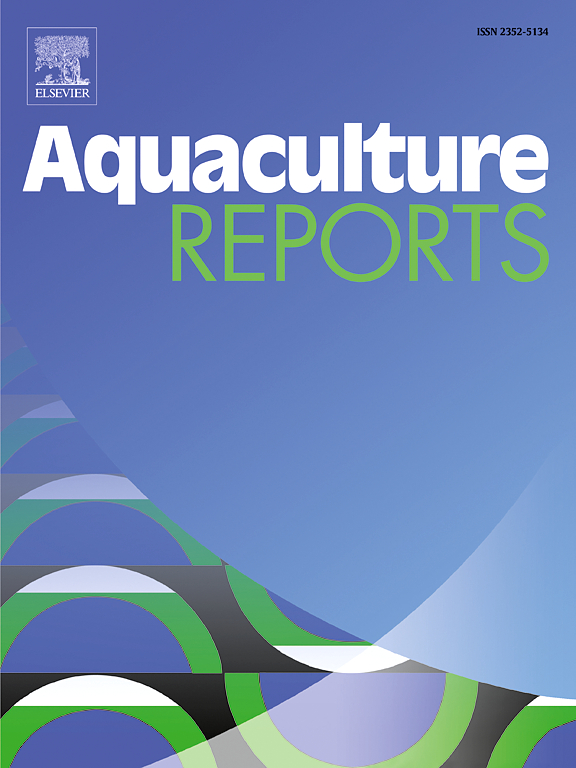Modulatory effects of selenium nanoparticles on gut microbiota and metabolites of juvenile Nile tilapia (Oreochromis niloticus) by microbiome-metabolomic analysis
IF 3.2
2区 农林科学
Q1 FISHERIES
引用次数: 0
Abstract
Selenium nanoparticles (SeNPs) are considered safe selenium supplements. At appropriate concentrations, SeNPs can promote growth, boost immunity, and modulate intestinal microbiota in aquatic animals. However, their effects on the metabolome of aquatic species have not yet been identified. This study evaluated the in vitro effects of our previous synthesized SeNPs, coated with abalone visceral polysaccharide-protein complexes (PSP-SeNPs), on the proliferation of probiotics and common aquatic pathogens, and the in vivo effects on the gut microbiome and metabolome of tilapia. PSP-SeNPs selectively promoted the growth of probiotics Lactobacillus rhamnosus and Lactococcus lactis, while inhibiting the growth of pathogens such as Staphylococcus aureus and Aeromonas hydrophila. In the fish breeding experiment, 360 healthy juvenile tilapias (initial weight 1.5 ± 0.5 g/fish) were divided into four groups (3 replicates/group, 30 fish/replicate): group C was fed with basal diet, groups Y, M and H, were fed with the basal diet supplemented with 0.3 mg/kg of Na2SeO3, 0.3 mg/kg of PSP-SeNPs, and 4.5 mg/kg of PSP-SeNPs, respectively. All fish were tested after 7 weeks of breeding in a recirculating aquaculture system. Results showed that group M significantly increased intestinal microbial diversity and potential probiotics (e.g., Cetobacterium, Fimbriiglobus, and Gemmata), while significantly decreased potential pathogens (Plesiomonas, Citrobacter freundii, and Aeromonas hydrophila). Groups H and Y significantly reduced Citrobacter freundii, but both groups decreased gut microbial diversity to varying degrees. Additionally, the pathogenic bacterial genus Plesiomonas significantly increased in group Y. In group M, the growth-promoting intestinal metabolite alpha-tocotrienol was significantly upregulated, whereas some essential amino acids were significantly downregulated in groups Y and H. In summary, 0.3 mg/kg SeNPs supplementation can regulate the intestinal microbiota, while 4.5 mg/kg SeNPs and 0.3 mg/kg Na2SeO3 can cause amino acid metabolism disorders. SeNPs showed higher safety than Na2SeO3.
求助全文
约1分钟内获得全文
求助全文
来源期刊

Aquaculture Reports
Agricultural and Biological Sciences-Animal Science and Zoology
CiteScore
5.90
自引率
8.10%
发文量
469
审稿时长
77 days
期刊介绍:
Aquaculture Reports will publish original research papers and reviews documenting outstanding science with a regional context and focus, answering the need for high quality information on novel species, systems and regions in emerging areas of aquaculture research and development, such as integrated multi-trophic aquaculture, urban aquaculture, ornamental, unfed aquaculture, offshore aquaculture and others. Papers having industry research as priority and encompassing product development research or current industry practice are encouraged.
 求助内容:
求助内容: 应助结果提醒方式:
应助结果提醒方式:


